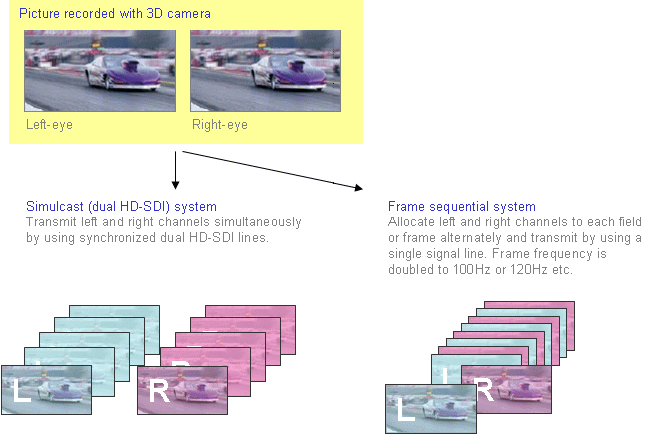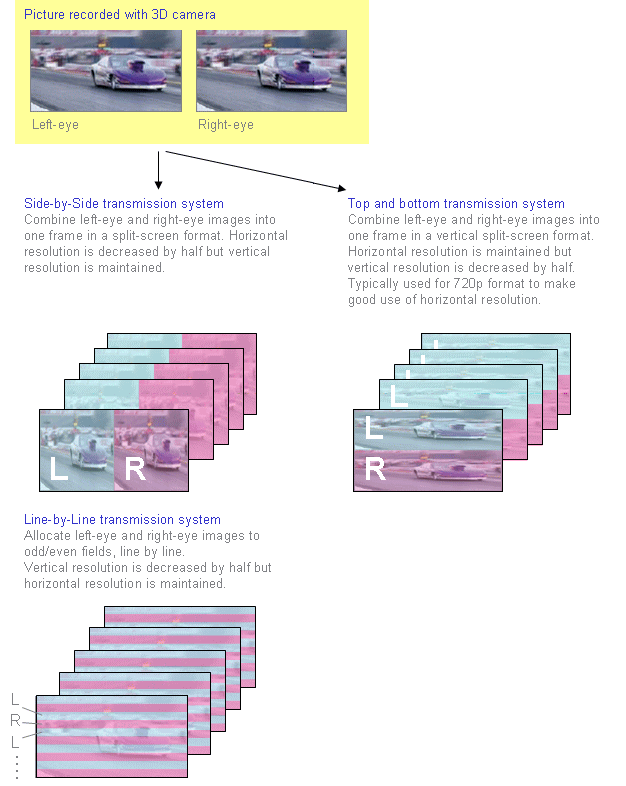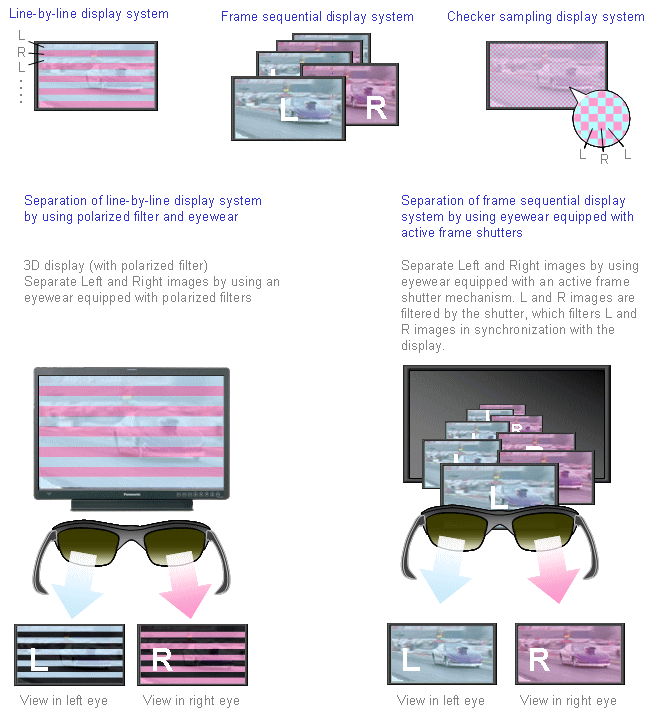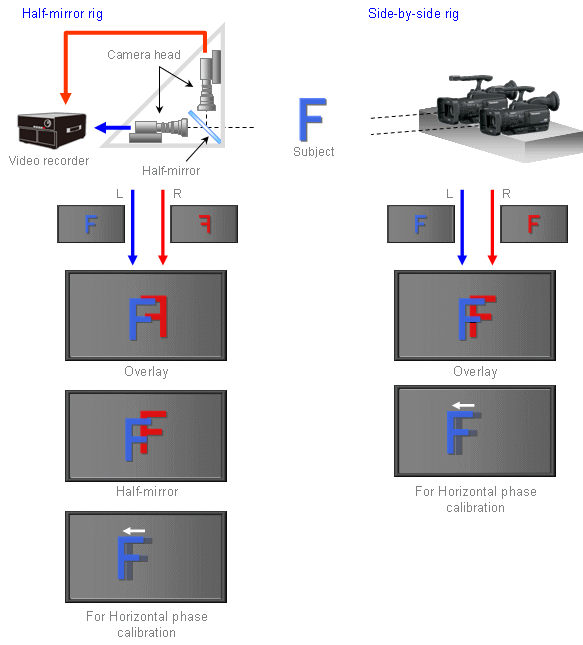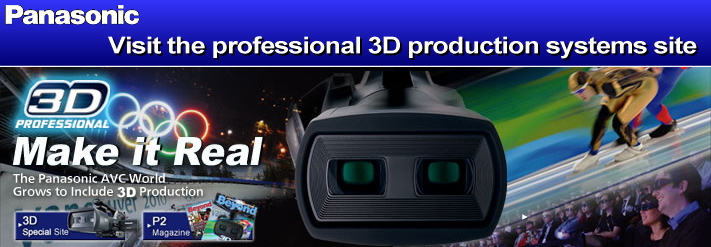 3D BASICS #3 Technologies for the Display and Transmission of 3D Video 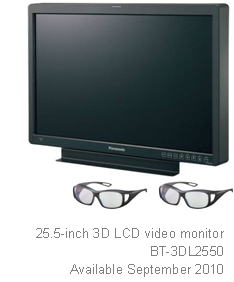 Issue #2 introduced principles such as convergence plane, which determines the amount of 3D effect, as well as principles of shooting with the AG-3DA1 integrated twin-lens 3D camera recorder. This issue introduces various ways to transmit and display recorded 3D video. Major transmission systems of 3D video There are many ways to transmit 3D video, but they can be broadly divided into systems that transmit the left and right eye images separately, and those that combine the left and right-eye images into a single frame before transmitting. Transmission systems (A) : transmit left-eye channel and right-eye channel separately Transmits all pixel information for the highest picture quality
Transmission systems (B) : combine both left-eye and right-eye images into one frame Resolution decreases compare to the systems in (A) but the advantage is that these signals can be handled with current HD equipment.
Major display systems of 3D video Left-eye and right-eye images supplied to display equipment are converted into "Line-by-line system" and "frame sequential system" etc and displayed from onscreen. Typically they require eyewear to show the left and right-eye video only to the appropriate eye.
3D Video monitor BT-3DL2550  A 25.5-inch full HD LCD video monitor, BT-3DL2550 displays 3D content using
an Xpol ® * polarizing filter, so content can be viewed with 3D polarized
(passive) eyewear. In addition, the BT-3DL2550 is equipped with multiple
calibration modes for conventional rig-type 3D camera systems. A 25.5-inch full HD LCD video monitor, BT-3DL2550 displays 3D content using
an Xpol ® * polarizing filter, so content can be viewed with 3D polarized
(passive) eyewear. In addition, the BT-3DL2550 is equipped with multiple
calibration modes for conventional rig-type 3D camera systems.The Xpol ® Stereoscopic 3D is an optical device based on a regularly arranged micro-polarizer. This, when bonded to a flat-panel display, allows 3D video to be viewed with polarized (passive) eyewear. The "line-by-line (horizontal interleave)" system adopted by the filter provides high horizontal resolution and superb color reproduction. Two BT-PGL10G polarized eyewear come standard with the BT-3DL2550 and are also available separately. Thanks to the circularly polarized filters featured in the eyewear, the 3D image can still be properly viewed even when tilting the head during viewing. * Xpol ® is a registered trademark of Arisawa manufacturing Co.,Ltd. Multiple calibration modes for rig-type 3D camera systems The AG-3DA1 integrated twin-lens 3D camera recorder automatically aligns the pictures of the built-in twin lens units, however in conventional rig-type 3D camera system, precise lens alignments (optical axes, picture framing, brightness, and color etc) are required to avoid unpleasant pictures. The BT-3DL2550 3D production monitor is equipped with multiple display modes (overlay, reverse, half-mirror, and horizontal phase variation) to assist such manual alignment work in conventional 3D systems.
|
||||
